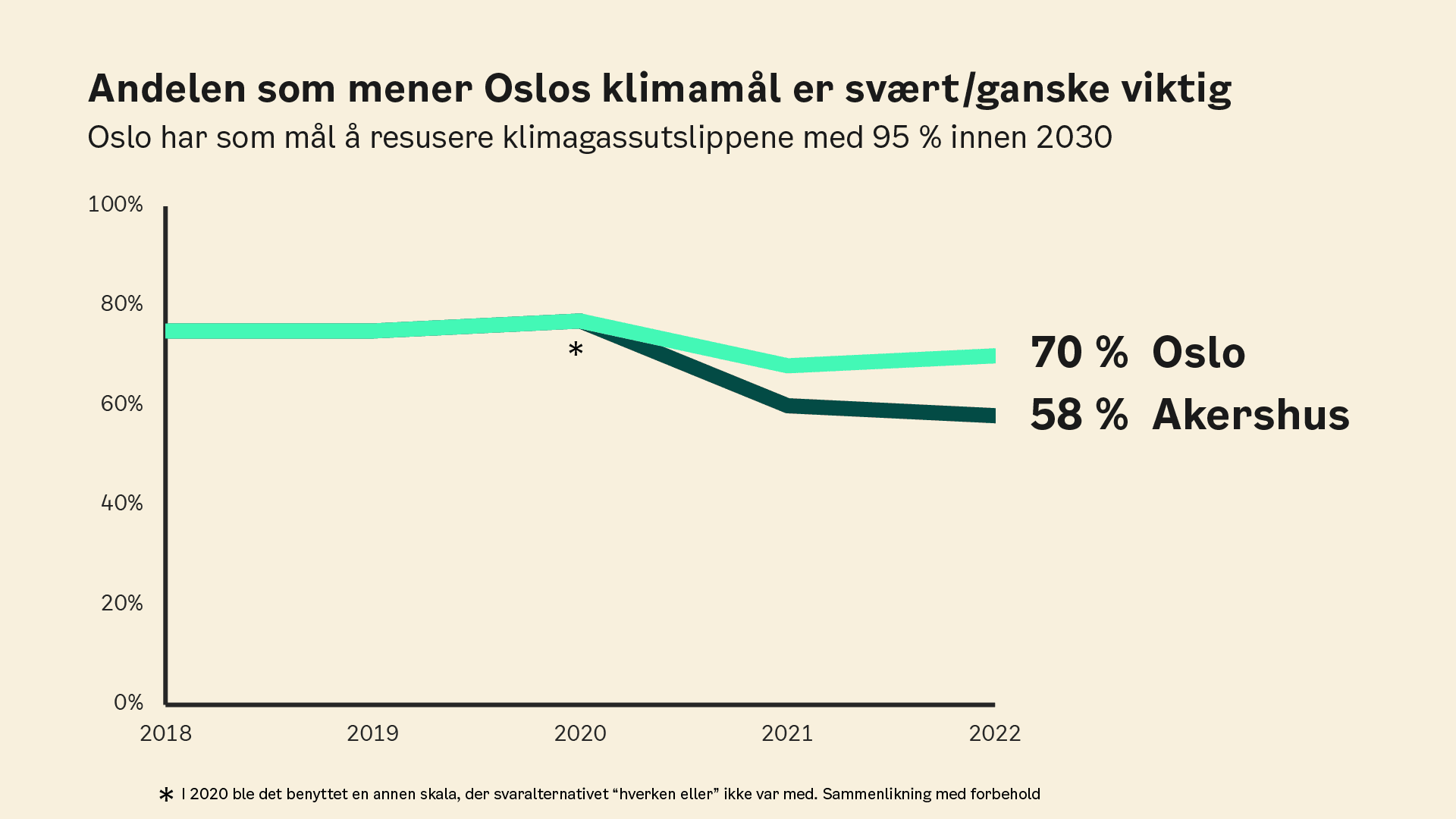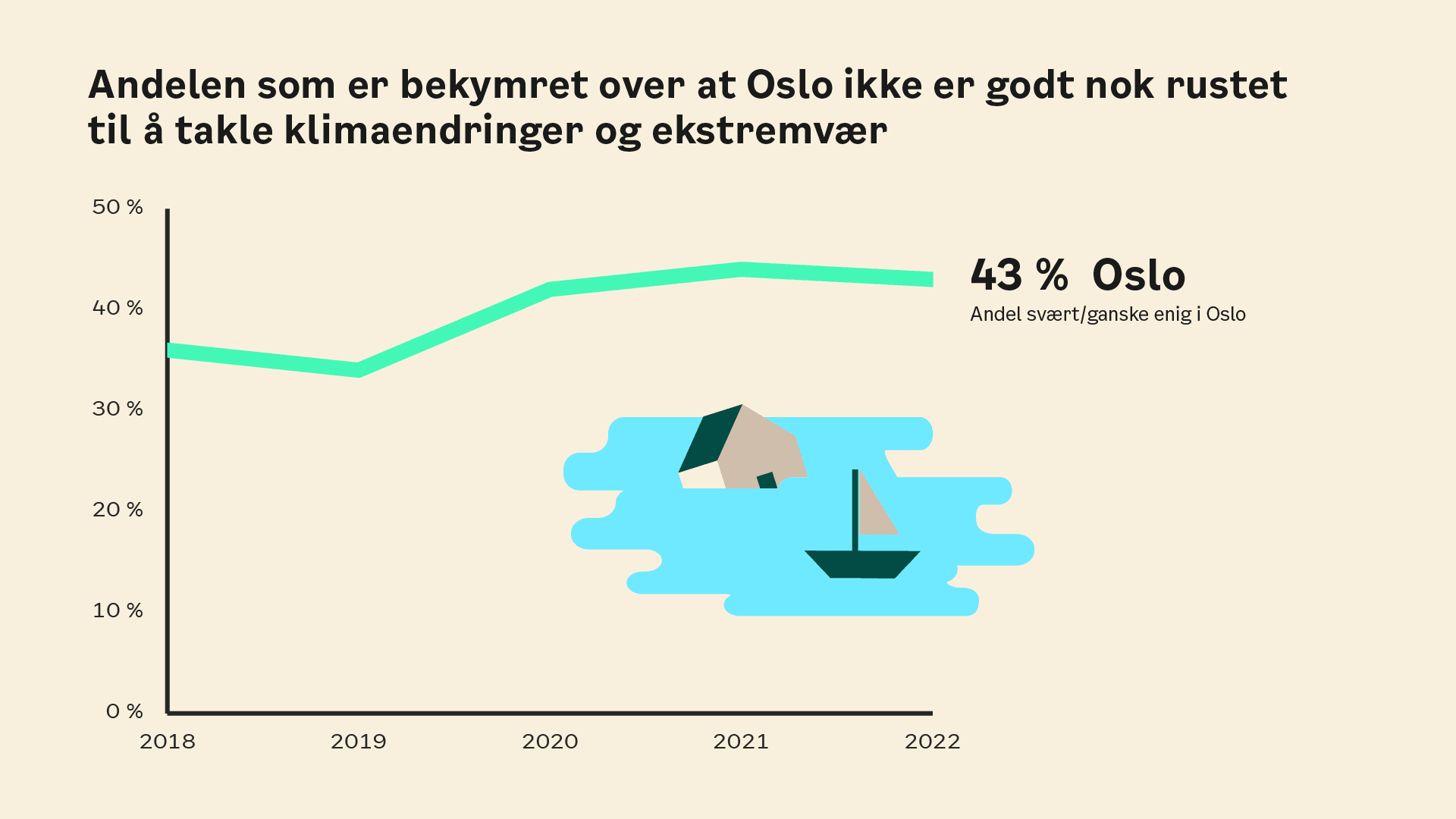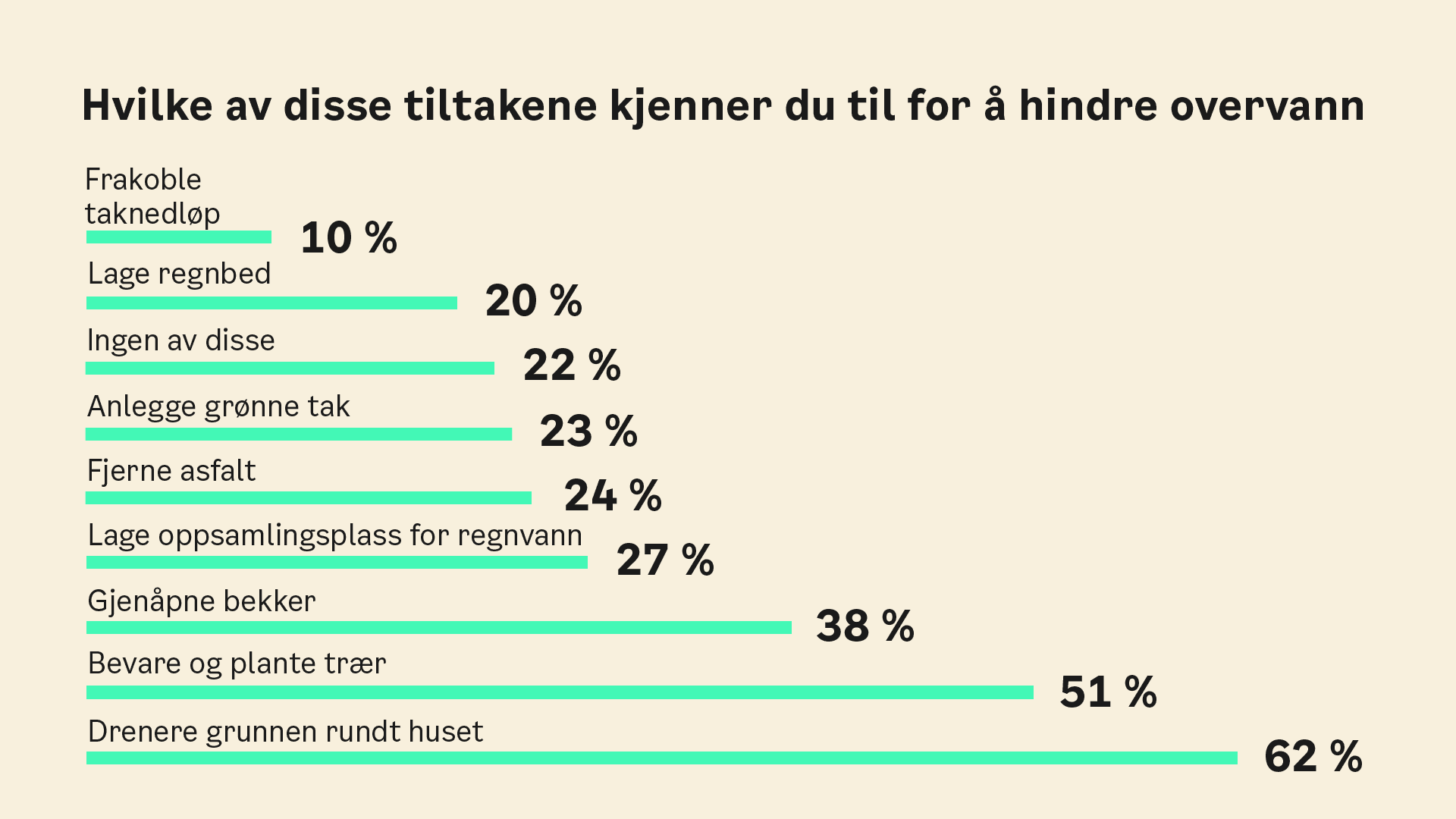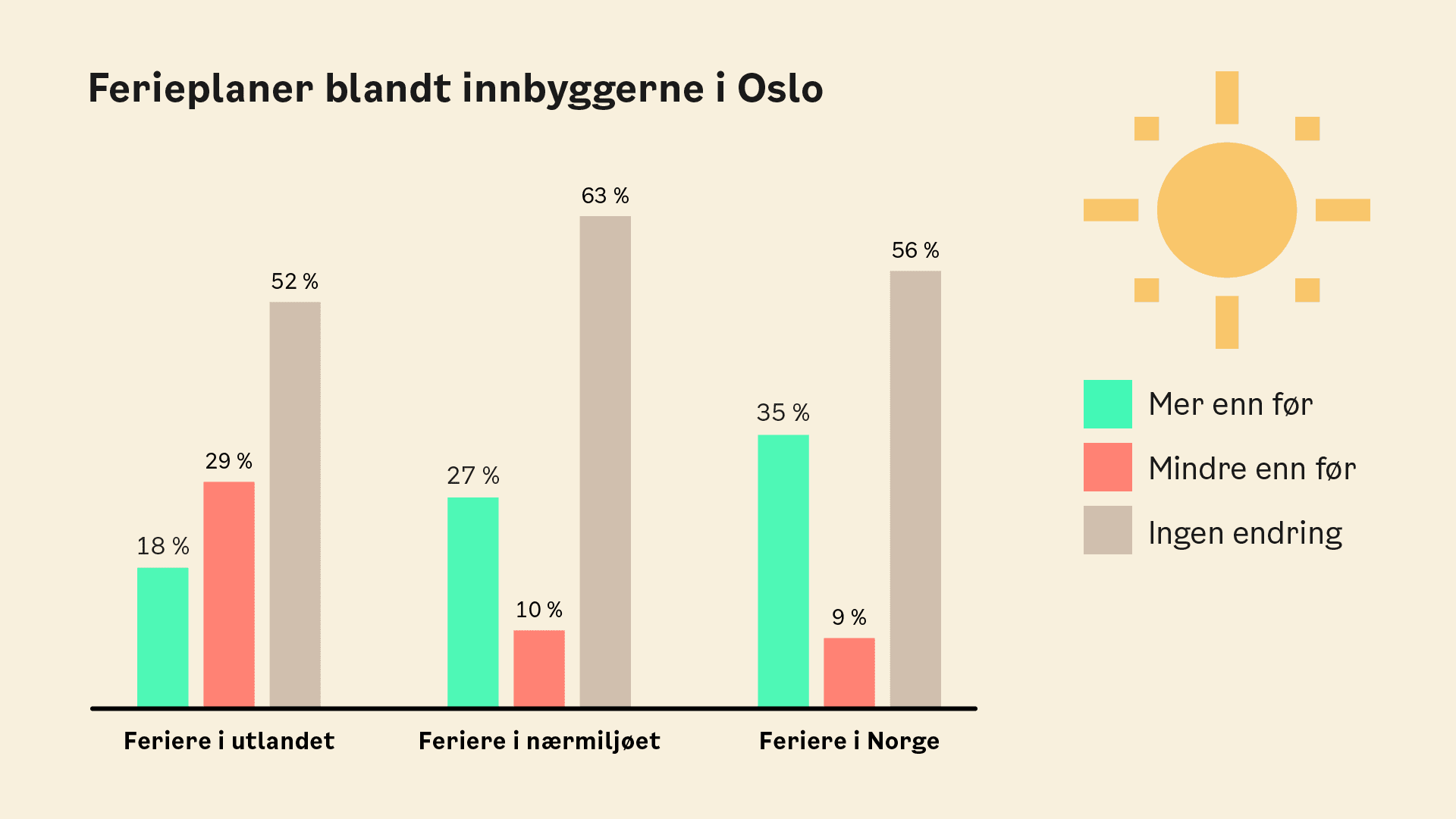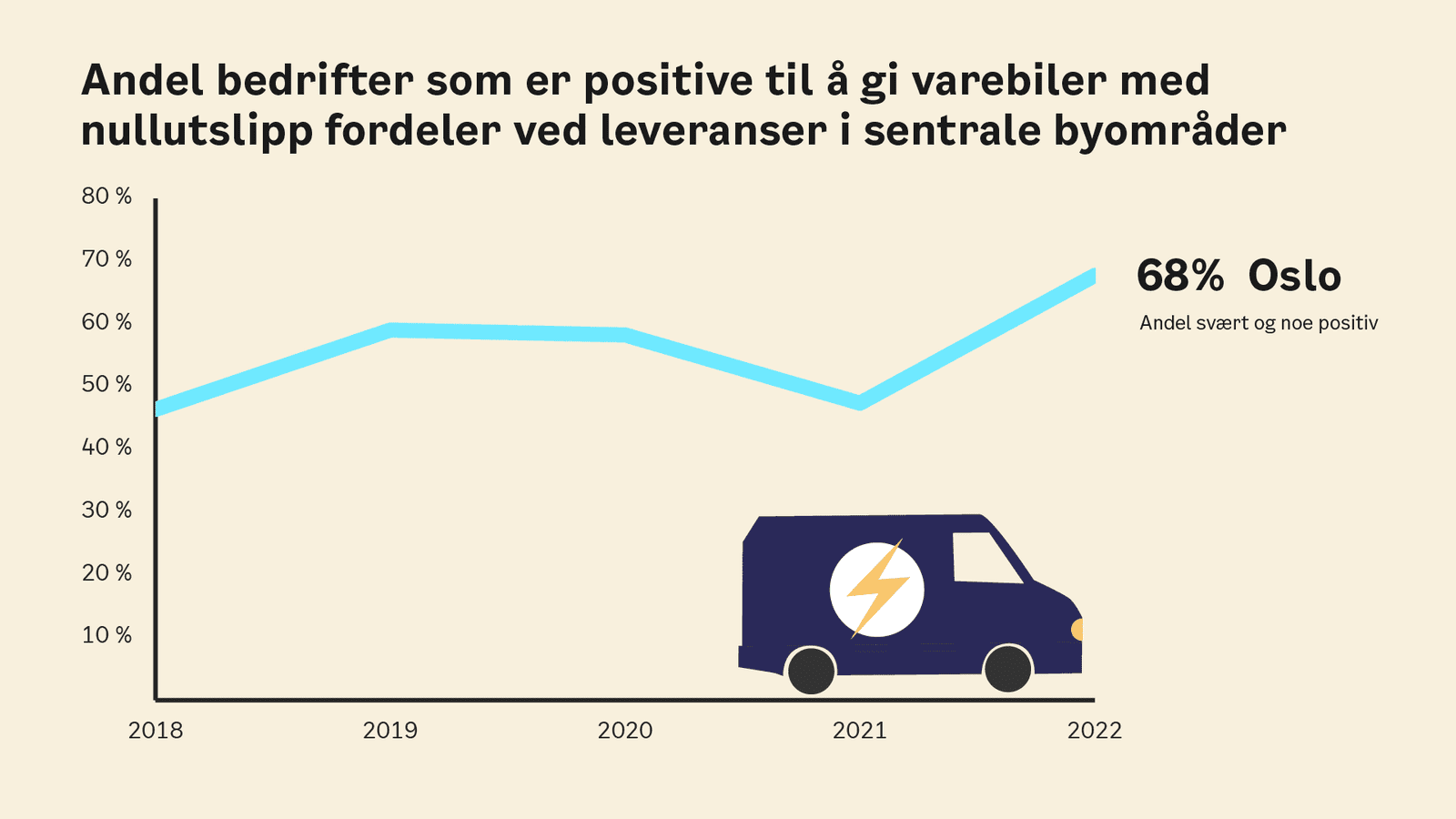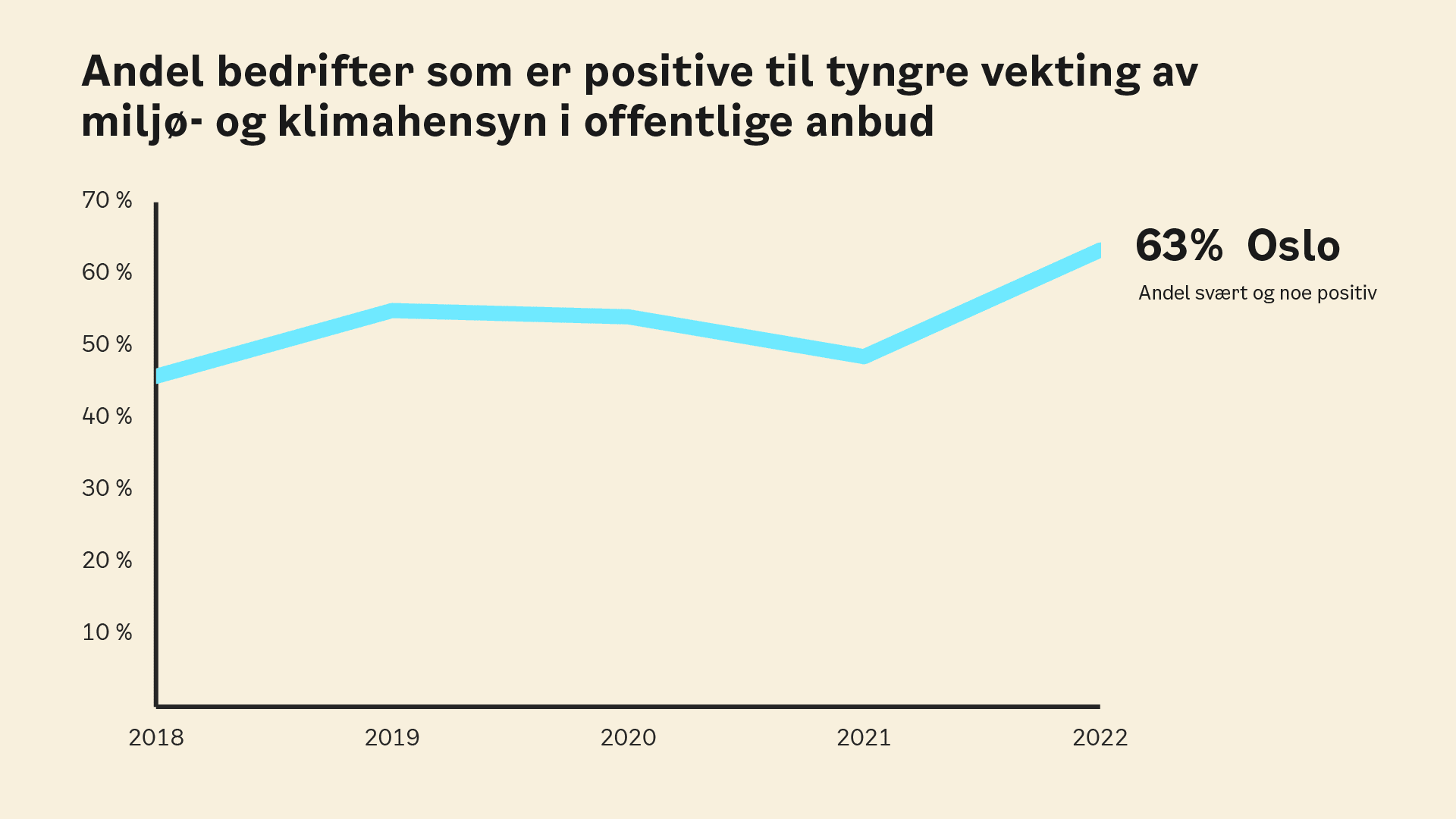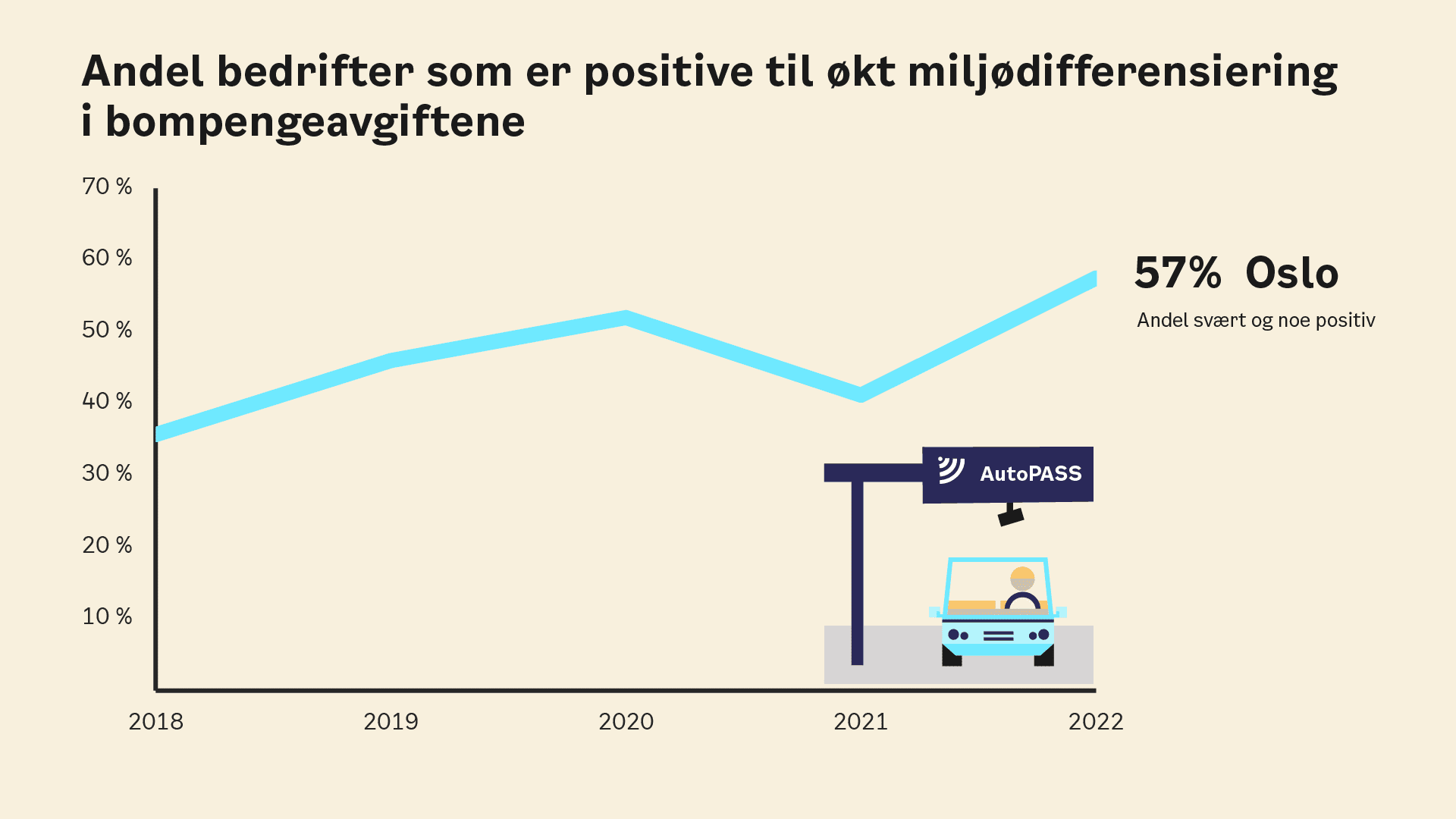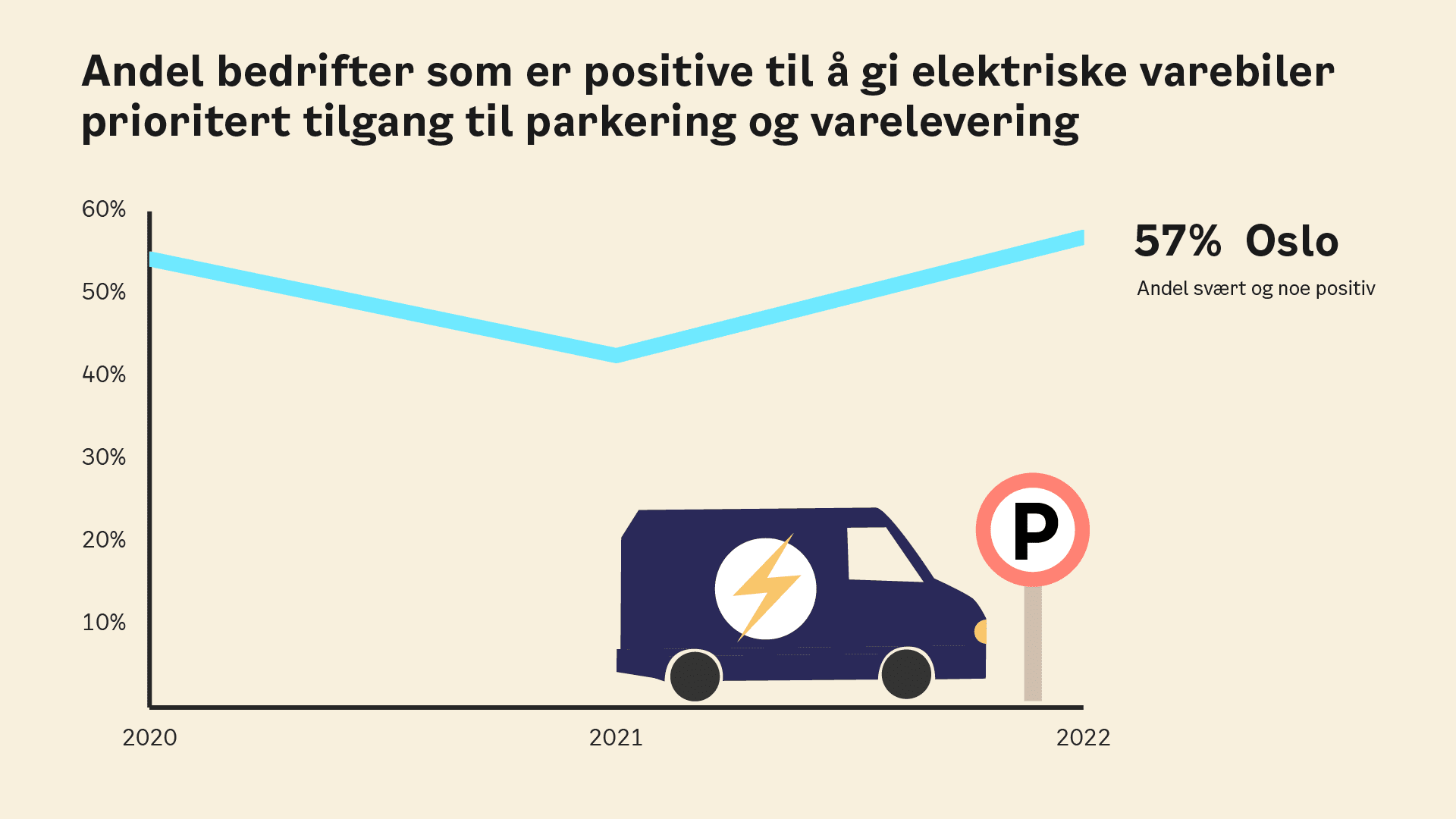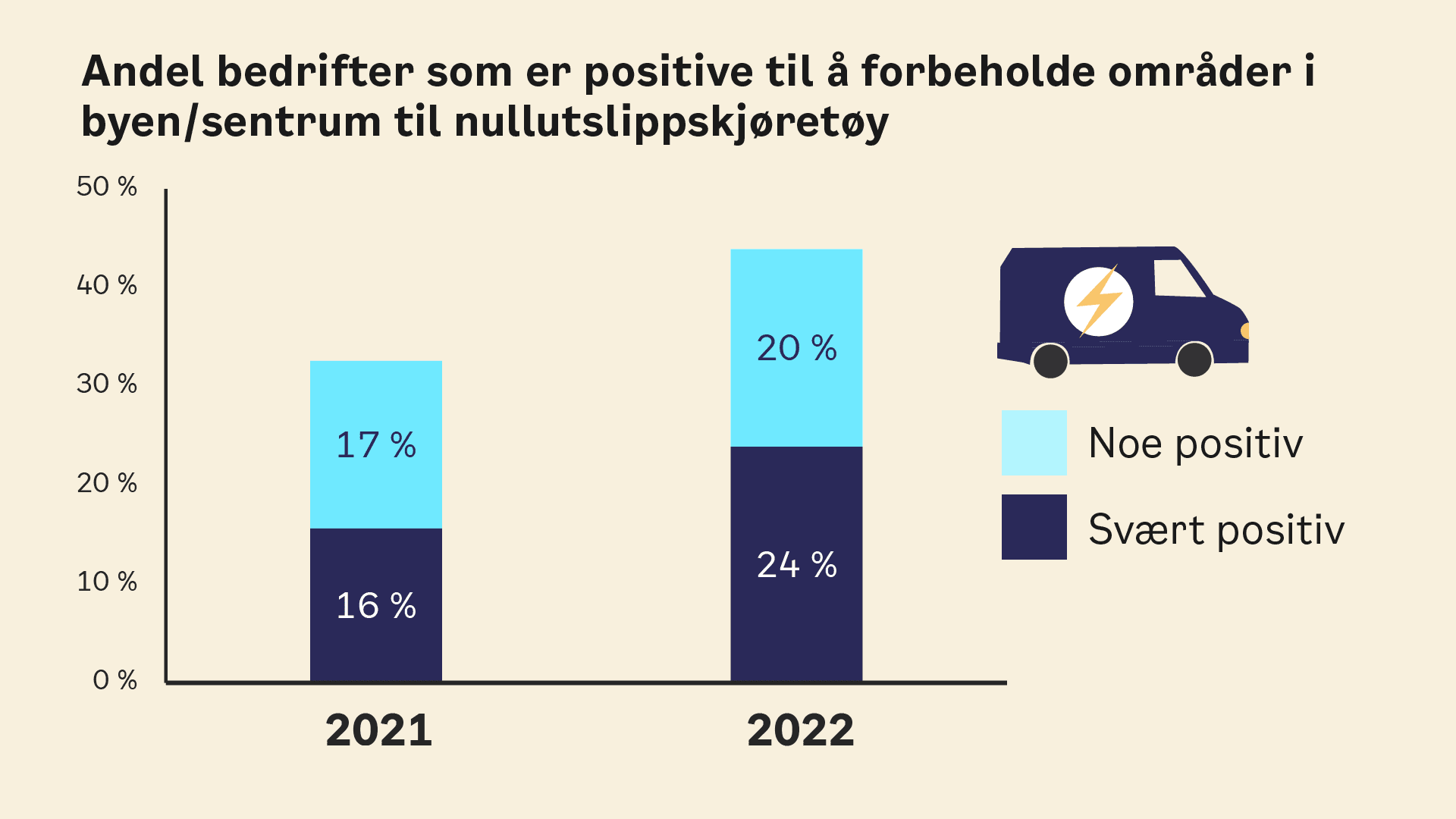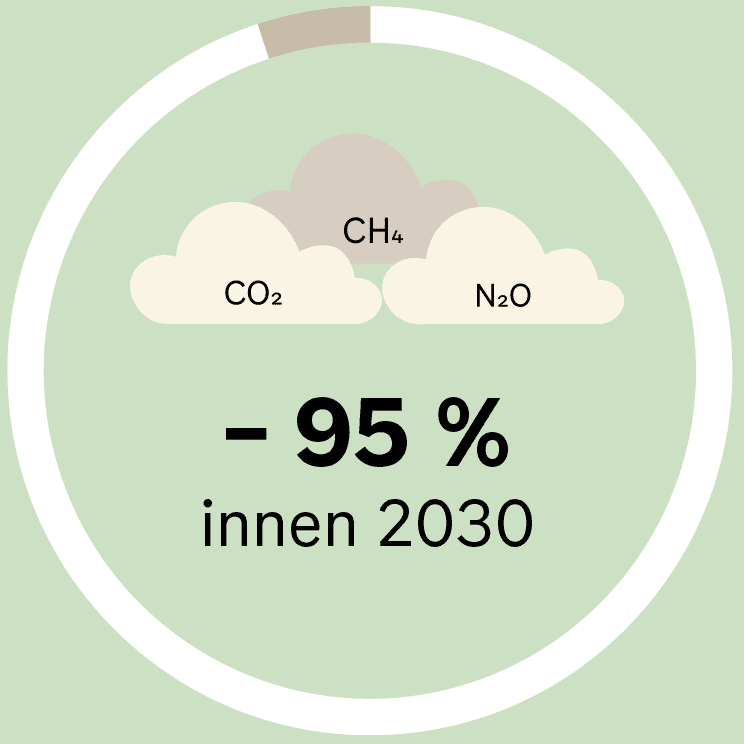Size: x-small
Type: color
Klimaundersøkelsen 2022, rapport
Endrede vaner
Undersøkelsen viser at mange har tatt klimavennlige valg i løpet av året og at det er sannsynlig at de vil gjøre klimavennlige tiltak i tiden fremover. Sammenlignet med i fjor er det også en økning i andelene som sier de allerede har gjennomført klimavennlige tiltak på områdene energieffektivisering i hjemmet, reise mer miljøvennlig til jobb eller skole, bytte til elbil, spise mindre kjøtt, redusere matsvinnet og redusere forbruket.
Flere har energieffektivisert i boligen
I årets undersøkelse sier 25 prosent av innbyggere i Oslo at de allerede har energieffektivisert hjemme. Dette er en økning fra fra 17 prosent i 2019. Her skiller ytre øst seg ut med størst andel (32 prosent) som allerede har energieffektivisert. I tillegg oppgir 37 prosent i Oslo at det er sannsynlig at de vil energieffektivisere de neste to årene.
I år er det for første gang spurt mer spesifikt om hvilke ENØK-tiltak det er sannsynlig at folk vil gjennomføre de neste to årene. ENØK-tiltaket som flest har gjennomført allerede, er å senke innetemperaturen i vinterhalvåret (33 prosent).
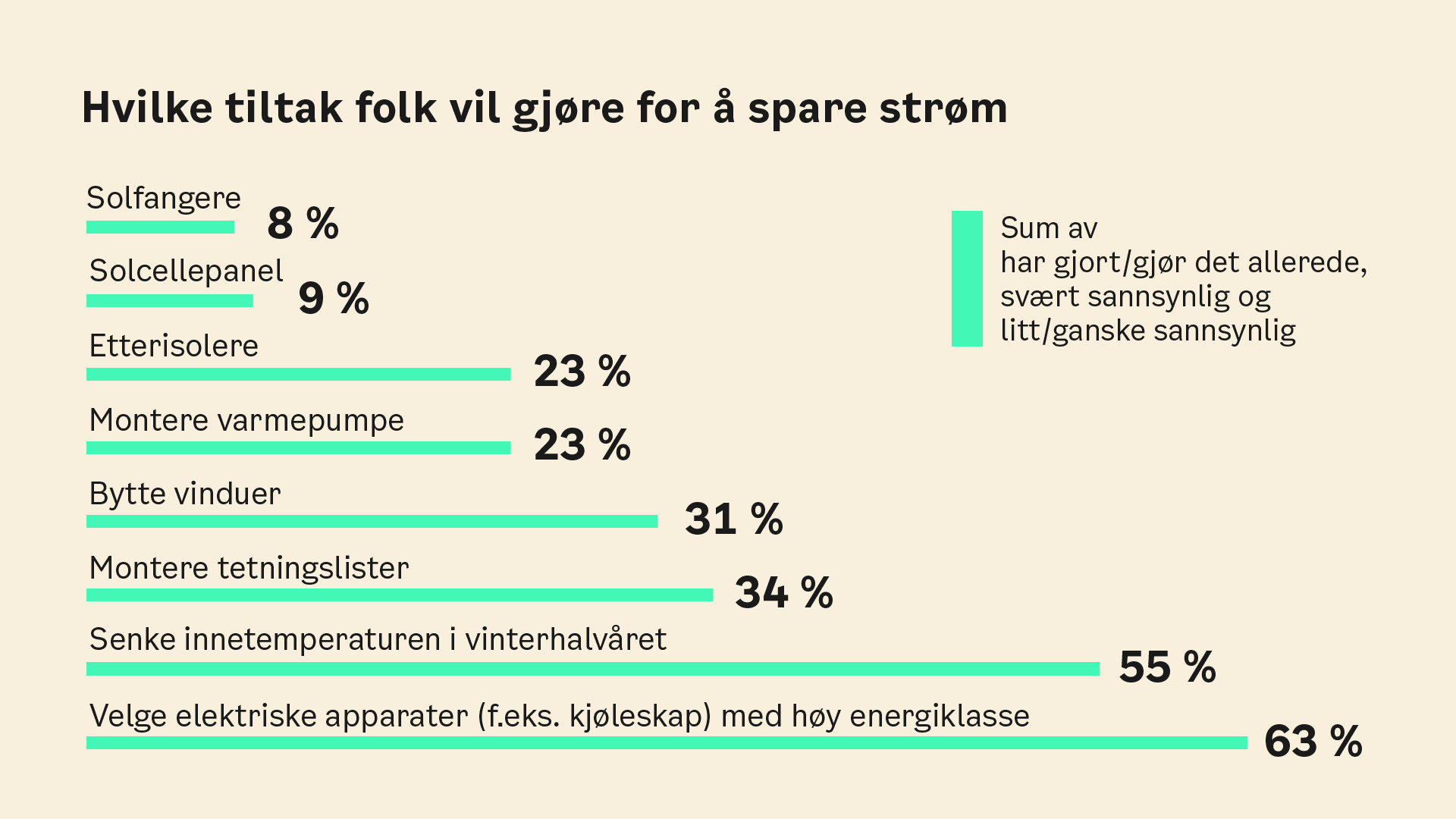
Stabil andel som reiser kollektivt
Andelen oslofolk som svarer at de allerede reiser mer kollektivt har vært ganske stabil siden 2019. I 2019 var andelen 45 prosent, mens den nå er 47 prosent. I Akershus har andelen steget de siste tre årene fra 19 til 27 prosent. I begge fylker er det klart flere kvinner enn menn som svarer at de reiser kollektivt.
I 2020 og 2021 var det anbefalinger om å ikke reise kollektivt med mindre man måtte da undersøkelsen ble gjennomført. I Oslo i 2020 så det ut til å gi en lavere andel som svarte at de allerede reiste mer kollektivt. I 2020 svarte 40 prosent Oslo og 19 prosent i Viken at de allerede gjorde det. I 2021 svarte 44 prosent i Oslo og 23 prosent i Viken at de allerede gjorde det.
Samtidig er det en signifikant økning blant de som svarer at de allerede reiser mer miljøvennlig til jobb eller skole: I Oslo oppgir 49 prosent at de allerede reiser mer miljøvennlig til jobb eller skole, noe som er en økning fra 44 prosent i fjor og 40 prosent i 2020.
Sammenlignet med tidligere svarer flere at de nå har byttet til elbil: Blant osloborgerne har andelen som svarer at de har byttet til elbil doblet seg fra 9 til 18 prosent siden 2019. Det er flest i de ytre bydeler som svarer at de har gjort dette. I Akershus har andelen som har byttet til elbil økt fra 12 til 23 prosent.
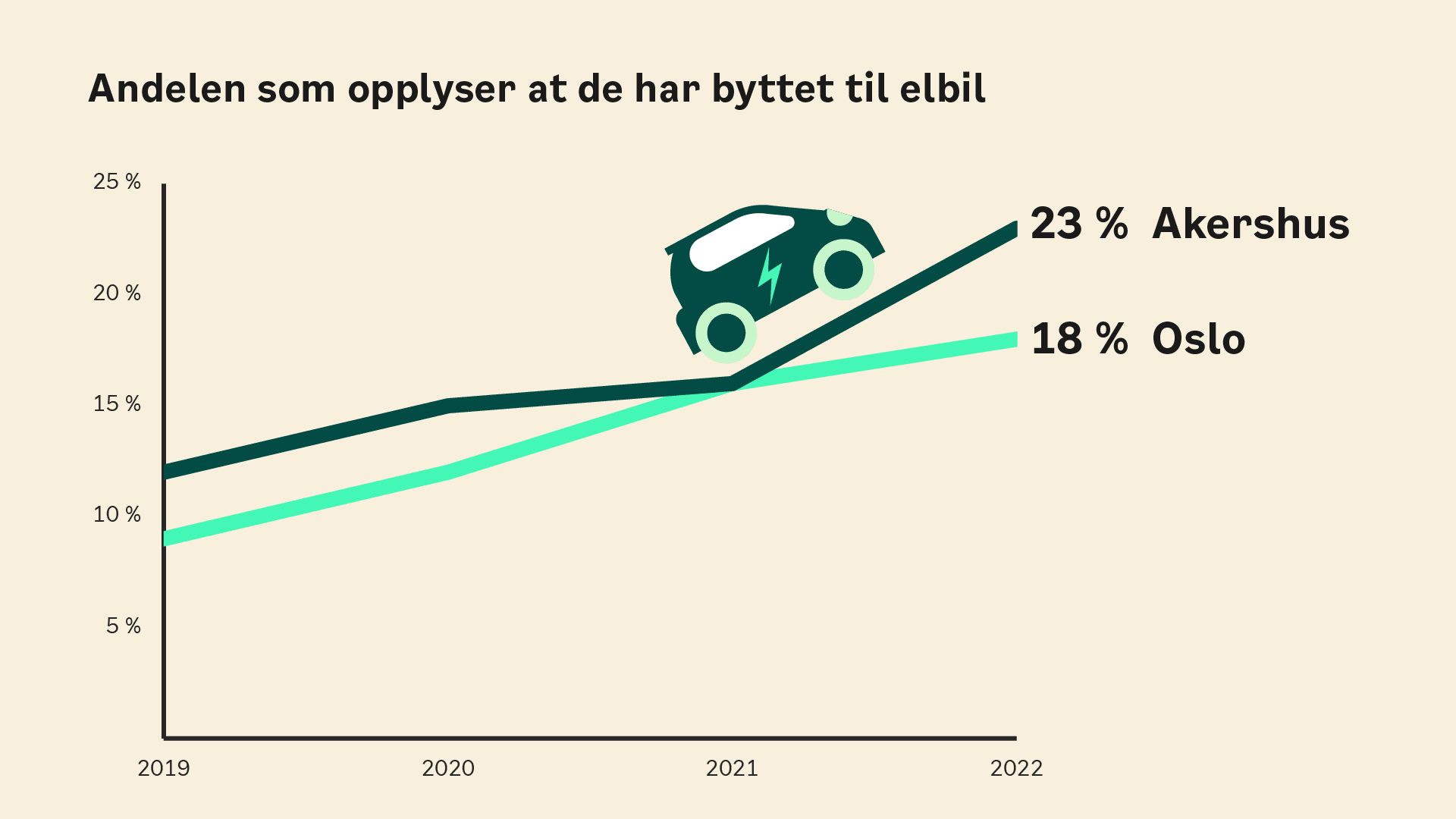
Flest vil kvitte seg med bilen i bydelene i indre vest
I årets undersøkelse er det for første gang spurt om det er sannsynlig at folk vil kvitte seg med bilen. 7 prosent i Oslo svarer at de allerede har gjort dette. Like mange mener det er sannsynlig at de vil gjøre det i løpet av to år. Det er flest i indre vest som sier de har kvittet seg med bilen (11 prosent).
Resultatene må ses i lys av andelen som har bil i de ulike bydelene. Andelen som ikke disponerer bil er størst i bydel indre vest og indre øst. 56 prosent i indre vest og 57 prosent i indre øst sier at de ikke disponerer bil, mens 8 prosent i begge bydeler har tilgang til bil gjennom bildelingsordning. Det er altså langt flere som svarer at de ikke har bil enn at de har kvittet seg med den, noe som kan bety at de aldri har hatt bil. Ser man hele Oslo under ett er det 39 prosent som ikke disponerer bil.
Innbyggerne sier de har redusert forbruket
Over tid er det en tendens at flere oslofolk ser ut til å kutte kjøttforbruket: Andelen som sier at de spiser mindre kjøtt har steget fra under hver femte i 2019 til hver fjerde i 2022. Videre har andelen som sier de har redusert matsvinnet økt fra 35 prosent i 2019 til 46 prosent i år, mens andelen som svarer at de har redusert forbruket generelt, har steget fra 20 til 26 prosent i samme periode.
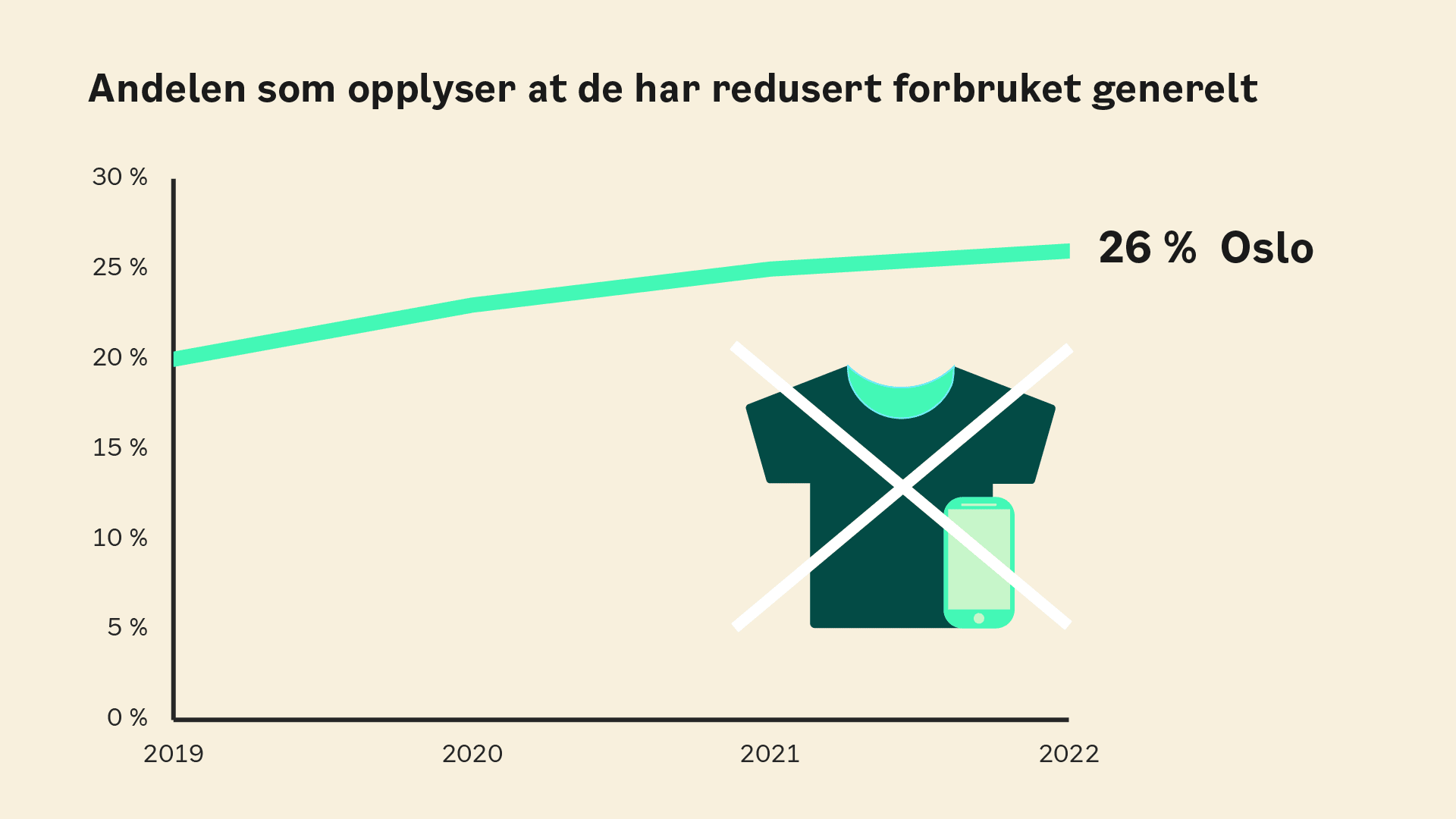
Fall i kildesorteringen
Det siste året har det vært et fall i andelen oslofolk som svarer at de allerede har økt kildesorteringen av plast, fra 63 prosent i 2021 til 56 prosent i år. Andelen er likevel høyere enn i 2019, da den var 46 prosent. 52 prosent av innbyggerne i Oslo svarer at de allerede har økt kildesorteringen av matavfall, mot 61 prosent i fjor. Tilsvarende andel i 2019 var 49 prosent. 28 prosent av osloborgerne svarer at de allerede har redusert plastforbruket, mens tilsvarende andel i 2019 var 23 prosent. I Akershus har andelen som har redusert plastforbruket økt fra 20 prosent i 2019 til 26 prosent i år.
